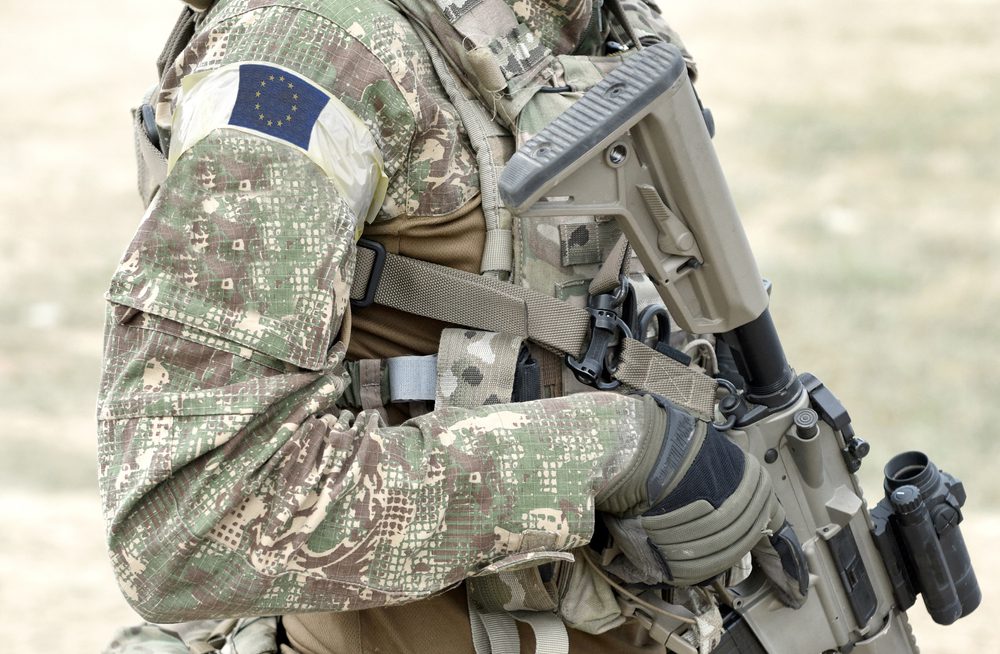
Soldier with assault rifle and flag of Europe on military uniform.
The European Commission asked the leaders of the EU’s peacekeeping, advisory, and training missions in third countries to reduce spending in order to reallocate their budget to accommodate more future missions, Euractiv reported on Monday, May 22nd.
EEAS, the European Union’s diplomatic service is currently running 13 “civilian missions” on three continents under the bloc’s common security and defense umbrella (CSDP), financed through its central foreign policy (CFSP) budget.
In 2023 alone, two new missions were added: one in Armenia (EUMA) in January to monitor the border with Azerbaijan, and one in Moldova (EUPM) last month against foreign (more specifically, Russian) interference.
However, the budget for these missions was already overstretched even before the war. After Russia’s invasion of Ukraine prompted unprecedented financial and military support from the EU to Kyiv, the EEAS suggested closing or downgrading several missions last summer, starting with the costliest ones in Iraq, Libya, and Somalia.
Now, apart from the two new missions mentioned above, the EU appears to be open to establishing even more foreign missions in the near future, at least that’s what this current budget reorganization suggests. The European Commission also announced it will propose a review of the current foreign policy budget during the summer to match the bloc’s growing geopolitical ambitions.
Nonetheless, the issue of a tight budget persists, hindering these prospective ambitions, at least until the end of the current budgeting cycle which ends in 2027.
According to the unnamed diplomat talking to Euractiv, the member states consensually chose to reduce the overall costs of existing CSDP missions rather than closing a few of them in order to avoid having to choose one partner over the other.
Therefore, the EEAS’ balanced approach is to “reduce costs without compromising [the] operations,” as Peter Stano, the EU’s lead spokesperson for foreign affairs said, potentially squeezing in future missions if needed.
This includes reducing staff and keeping only the essential activities, which—in some cases—have been ongoing since last summer, allowing (in part) the Armenian and Moldovan missions to be established.
“Missions are taking every possible step to maximize the use of existing resources while minimizing costs, without compromising their ability to deliver high-quality services to the host country,” Stano explained.
To further lower the costs, the EU foreign ministers also agreed on a new Civilian CSDP Compact on Monday, May 22nd, which is aiming “to increase the number of seconded experts across all missions and all levels.”
In this context, “seconded” means personnel deployed—and, therefore, funded—by the member states, and not the central CFSP budget. According to the agreement, the new guidelines aim “to reach at least 40% women’s participation and 100% seconded staff in operational positions.”
The document also addresses future mission readiness, regardless of costs, with the EU pledging to deploy at least “200 civilian experts within 30 days, when needed, including complex environments.”
Albeit just a drop in the ocean, this decision also contributes to the general trend of increasing militarization at the EU level, the current direction of which—as the British journalist and author Mick Hume opined for The European Conservative—inevitably leads to establishing a European army.
